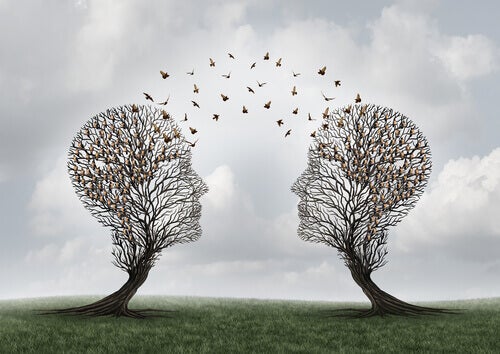What is social cognition? Social cognition is nothing more than a study of how we process information (Adolphs, 1999). This treatment includes how we encode, store and retrieve information from social situations.
Today, social cognition is the dominant model and focus of social psychology, which occurs in opposition to pure conductism, which rejected the intervention of mental processes to explain behavior (Skinner, 1974).
- Social cognition refers to the way we think about others.
- In this sense.
- It would be a powerful tool to understand social relationships.
- Through social cognition.
- We understand the emotions.
- Thoughts.
- Intentions and social behaviors of others.
- In social interactions.
- Understanding what other people think and feel can give us a great advantage to develop in this context.
Do people not address situations as neutral observers?These previous attitudes will influence what we see and remember.
In this way, our senses receive information that is interpreted and analyzed, subsequently, these interpretations are at odds with the information we keep in our memory.
However, this simple description is not real. There are other factors, such as emotions, which also condition the process, remember that thoughts influence emotions, but emotions also influence thoughts (Damasio, 1994), for example, when we are in a good mood, the world is (or seems) A happier place When we are well able to perceive the present with more optimism, but we also look at the past and the future in a more positive way.
Social cognition develops slowly (Fiske and Taylor, 1991). Follow an observation-based trial and error process. Direct experiences and exploration guide learning. However, social knowledge is very subjective, the interpretations we can make of a social event can be very different and incorrect.
In addition, although we have mental structures that facilitate the processing and organization of information, sometimes these useful structures also betray us.
These structures or patterns influence attention, coding and the search for information, being able to lead us to a self-fulfilling prophecy, a prediction that, when made, is in itself the cause of becoming reality (Merton, 1948).
On the other hand, social knowledge is partly independent of other types of knowledge. People with superior problem-solving intellectual skills don’t necessarily have superior skills to solve social problems. Problem-solving skills can be learned or taught, regardless of your intellectual skills. That’s why it’s so important to improve intelligence, whether emotional or cultural.
One of the most useful models of social cognition is that of Robert Selman, who anticipated a theory about the ability to place oneself in the social perspective of others.
For this author, taking on the social perspective of others is the ability that gives us the power to understand ourselves and others as subjects, allowing us to react to our own behavior from the point of view of others Selman (1977) proposes five stages of development for this social perspective:
In psychology there are many ways to understand social cognition, one of the most important focuses on the social dimension of knowledge, knowledge, from this perspective, would have a sociocultural origin, since it is shared by social groups.
The main representative of this idea is Moscovici (1988), who spoke of “social representations”. These are ideas, thoughts, images, and knowledge shared by community members. Social representations have a dual function: to know the reality to plan the action and facilitate communication.
Another high-impact perspective is North America (Lewin 1977), this way of understanding social cognition focuses on the individual and his psychological processes, according to this vision, the individual builds his own cognitive structures from interactions with his physical and social environment .
As we have seen, social cognition is the way in which we handle the large amount of social information that we receive on a daily basis, the stimuli and data that we collect through the senses are analyzed and integrated into mental patterns, which will later guide our thoughts and behaviors. .
These patterns, once formed, will be difficult to change, so according to the phrase attributed to Albert Einstein, it is easier to disintegrate an atom than a prejudice. Our first impressions will be crucial, unless we set in motion a critical thought that helps. We develop a social cognition that is more effective and appropriate to reality.

